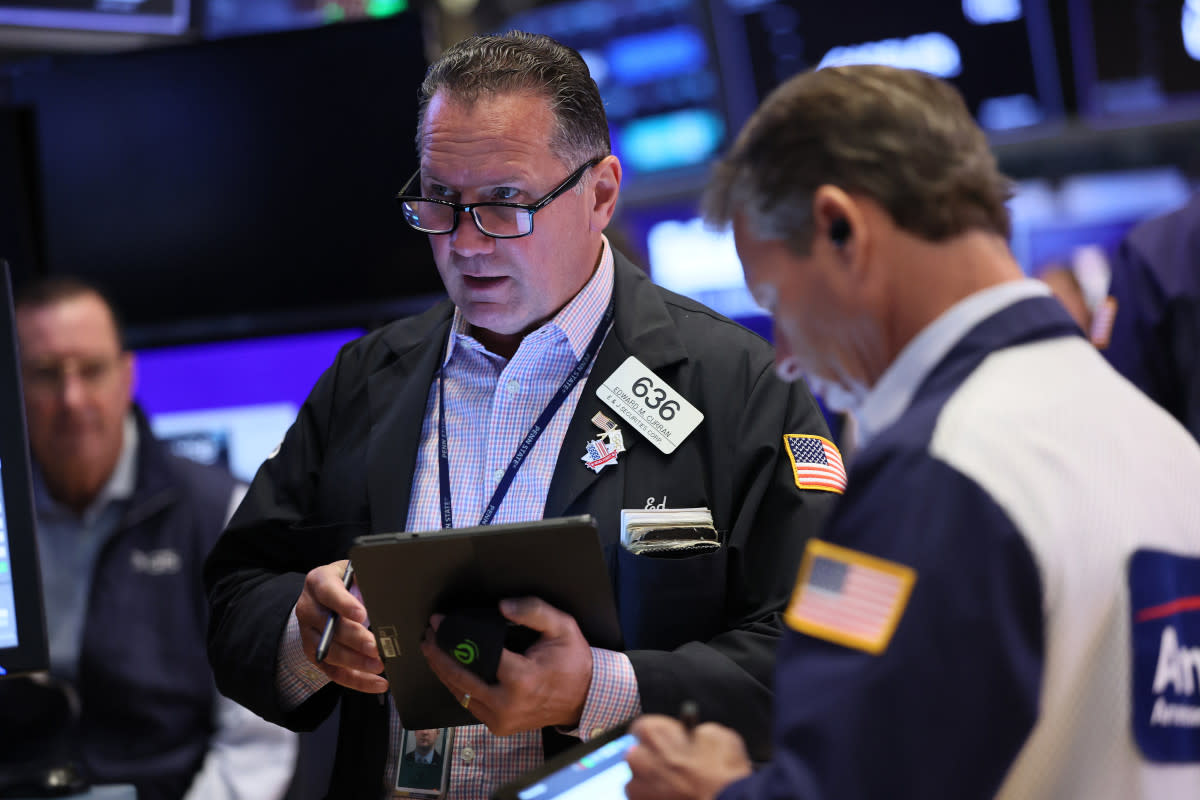The U.S. economy has held up, but the evolving growth mix is impossible to ignore.
Following the post-pandemic lull, labor productivity snapped back, rising 1.6% in 2023 and 2.3% in 2024, pushing output even as hours worked cooled off.
Beneath the surface, total factor productivity rose 1.3% last year across private nonfarm businesses, underscoring the impact of technology and process upgrades.
A considerable chunk of that increase is linked to early-stage AI adoption, with businesses doubling down on automation and digital workflows. On the flip side, economists caution that the gains are uneven and aren’t broad-based.
That said, the near-term numbers point to sizeable volatility. GDP contracted at a -0.5% annualized rate in Q1 2025, and then swung back to +3.3% in Q2, with imports flipping from a drag to a boost.
As we look ahead, the OECD pegs U.S. growth at 1.8% in 2025, comfortably below the 2.8% logged in 2024, on the back of tariffs and labor headwinds, despite AI-linked capex providing some offset.
With that backdrop, Goldman Sachs analysts just dropped a head-turning Wall Street note on AI’s long-term role in reshaping baseline growth for the rest of the decade.
The call comes with real long-term implications for policy, profits, and positioning.
Goldman Sachs just reframed AI as a macro force.
Goldman analysts now expect the U.S. potential GDP growth to rise to at least 2.1% through the rest of the decade, on the back of stronger AI-led productivity gains.
“Artificial intelligence will drive productivity growth to 1.7% through the end of 2029, and then 1.9% in the early 2030s,” they wrote. That shift supports GDP growth in the 2.1% to 2.3% range, above the pre-pandemic baseline.
Recent history backs it up.
Goldman analyst Manuel Abecasis said:
Since 2019, economywide labor productivity rose about 1.6% per year, well above its pre-pandemic average of 1.2%. At the same time, elevated immigration in 2022–2024 boosted annual labor force growth to about 0.8% on average since 2019 (vs. 0.6% before the pandemic).
Related: Cathie Wood offloads two big winners in surprise move
Earlier this year, Goldman forecasted that AI could bump global GDP by 7%, roughly $7 trillion over the next decade, with an eye-catching $160 billion already added to “true GDP” through AI and investment.
-
Productivity growth was 1.7% through 2029, followed by 1.9% in the early 2030s.
-
Potential U.S. GDP growth is pegged at 2.1% to 2.3%, hovering above pre-pandemic norms.
-
Immigration and higher labor force growth are also strengthening the baseline.
-
Goldman sees AI adding $7 trillion globally, with $160 billion already in play.
That said, not everyone shares Goldman’s view that AI will meaningfully boost GDP.
Investing mogul Warren Buffett, for instance, likened AI to a “genie… somewhat similar” to nuclear weapons that are powerful and unpredictable. That’s not exactly a solid foundation for steady, productivity-led GDP gains.
Related: Palantir lands surprise AI deal with 109-year-old titan
Palantir founder Peter Thiel is equally blunt, calling AI “communist” for its tendency to centralize power, a structure that typically points to slow adoption and blunt broad economic spillovers.
Ray Dalio, meanwhile, flagged bubble-like dynamics in AI-exposed stocks, warning investors against extrapolating too quickly.
The data reinforce those doubts.
Pew Research finds that 63% of U.S. workers use little to no AI on the job, while only 16% use it for “some” work, which are hardly the numbers that point to a shape-shifting change.
Similarly, the OECD says the AI surge hasn’t delivered on healthier aggregate productivity, with gains concentrated in specific pockets.
In addition, the Federal Reserve Bank of San Francisco highlights that the AI-led productivity benefits are contingent on diffusion speed and could be negligible initially.
Related: Analyst makes major change to CoreWeave stock price target
This story was originally reported by TheStreet on Sep 25, 2025, where it first appeared in the Economy News and Analysis section. Add TheStreet as a Preferred Source by clicking here.
Terms and Privacy Policy
Yahoo News – Latest News & Headlines
Read the full article .


